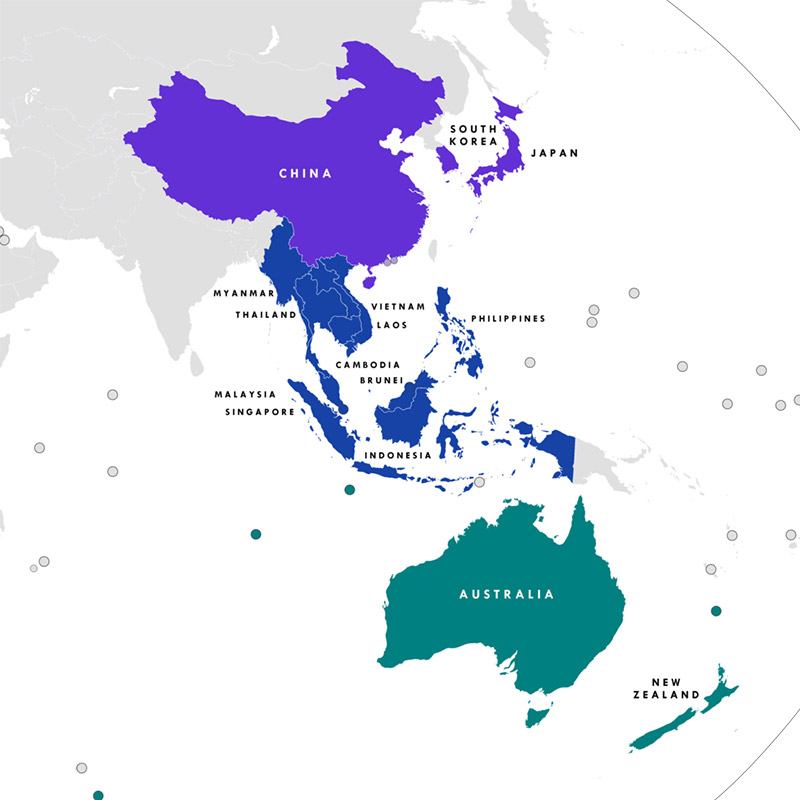After eight years of back-and-forth negotiations, Asia’s Regional Comprehensive Economic Partnership on Trade (RCEP), the world’s largest regional trade agreement, was signed in an online ceremony on 15 November 2020. While more limited than the U.S.-led Trans-Pacific Partnership (TPP-12) and its successor, the Comprehensive and Progressive Trans-Pacific Partnership (CPTPP), it is a major regional free trade agreement that poses challenges for the United States.
Regional Comprehensive Economic Partnership

1.Introduction
RCEP’s members include the 10 members of the Association of Southeast Asian Nations (ASEAN) (Brunei, Cambodia, Indonesia, Laos, Malaysia, Myanmar, the Philippines, Thailand, Vietnam, and Singapore) along with Australia, China, Japan, South Korea, and New Zealand.
While many observers have underestimated the tangible benefits of RCEP, it is expected to have a significant effect on regional trade. The final RCEP trade deal lowers tariffs, modestly expands services trade, harmonizes rules of origin across the region, and generally promotes expanded intraregional trade and sourcing. RCEP will cover 30 percent of the world’s population (2.2 billion people), with a combined gross domestic product of US$38 trillion, about a third of global gross domestic product. The goal is for the agreement to enter into force on 1 January 2022, although some participants reportedly want an earlier entry into force. The signing of the agreement came about this year in part because India, which had become a major roadblock, dropped out.
RCEP is expected to stimulate regional Asian trade. The Brookings Institution has estimated RCEP will add US$209 billion a year to world incomes and US$500 billion to world trade by 2030. 1 Below is a summary of some of the benefits and limitations of the RCEP, particularly as compared to the Comprehensive and Progressive Agreement for Trans-Pacific Partnership (CPTPP).
2.Tariff reductions
RCEP will eliminate more than 90 percent of import tariffs within 20 years of coming into force. RCEP’s tariff reductions are more limited in coverage than CPTPP and TPP-12, however. The exact extent and timing of RCEP’s tariffs cuts requires sorting through lengthy country schedules and exclusions. RCEP appears to cover about 90 percent of tariff lines, whereas CPTPP covers around 99 percent. RCEP also includes extensive exclusions for import-sensitive agricultural products and 20-year transition periods for certain tariff cuts to go into full effect. While some members (e.g., Australia, Brunei, Cambodia, Malaysia, Myanmar, New Zealand, Singapore, and Thailand) will apply a single tariff schedule to all other RCEP members, the remaining members have elected to phase out their tariffs at different rates for different RCEP members. This differentiating approach means tariffs on imports into an RCEP market may differ from depending on which RCEP Member they are coming from – at least until the cuts are fully phased in.
Moreover, the agreement represents the first time China, Japan, and South Korea have entered a free trade agreement together. These countries represent the largest, second-largest, and fourth-largest economies in the region, respectively. In a joint statement, the bloc members said the deal “will play an important role in building the nation’s resilience through an inclusive and sustainable post-pandemic economic recovery process.”






